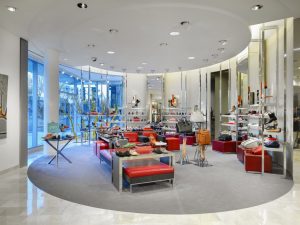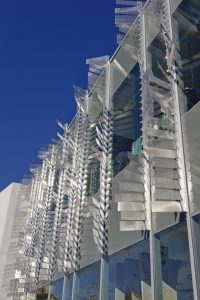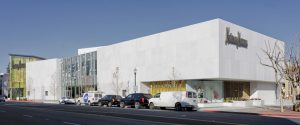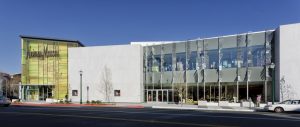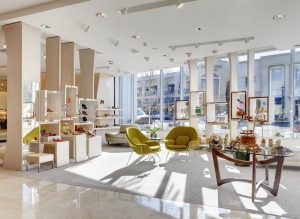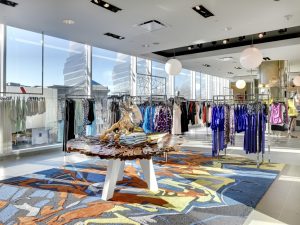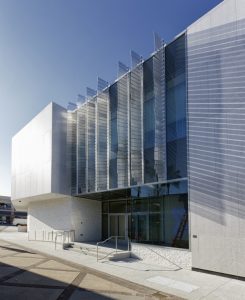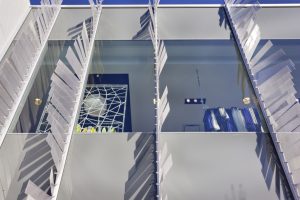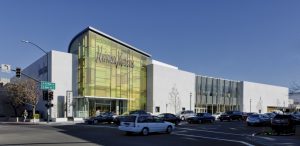Department stores have always been the multi-tasker of retailing, offering an array of products – from housewares and jewelry to apparel and beauty – within a spacious environment.
“They’ve always been a place to go at any time in your life and find something to buy,” says Steve Gardner, vp, principal, FRCH Design Worldwide (Cincinnati). “They haven’t abandoned that – you can go as a young shopper and find trends and then grow and evolve with the product category.”
While department stores continued to adapt and expand their merchandise assortment, the store environments began to suffer from lack of distinction. “Department stores have been labeled as a catch-all but nothing special,” says Kathleen Jordan, principal at design firm Gensler’s New York office. “Yet there is a huge opportunity for them to look back at what made them popular originally and apply those strengths in new, innovative ways.”
Adds FRCH’s Paul Leichleiter, chief creative officer, “People don’t want beige. Stores need to strive for an environment with an opinion.”
Thankfully, a host of new design and architectural trends shows renewed interest in the department store environment, including a refinement of brand presentations, new layouts and store amenities, and architectural styles that bring the outside in.
Let the light shine in
One of the most prominent design trends shaping the department store landscape is the opening up of perimeter walls. “We’re getting smarter about maximizing floor space,” says Ignaz Gorischek, vp, store development, Neiman Marcus (Dallas).
Advertisement
Without the need to use perimeter walls only for merchandise displays, retailers are uncovering or adding windows, allowing natural light to flood their interiors and bring views of the outside in. “It feels good to look outside,” says Gorischek. “It makes you feel like you’re part of the community when you can look out onto the street.”
Neiman Marcus’s latest store concept on display in Walnut Creek, Calif., features a multitude of windows on the main and second floors, as well as a corner, glass window area for men’s shoes.
Macy’s Inc. (Cincinnati) is undertaking one of the sector’s largest retail renovations at its Herald Square flagship in New York, which is expected to be completed by 2015. Among plans for the project are the “opening up of as many windows as possible,” says Steven Derwoed, Macy’s vp, store design and merchandising, including views over Broadway and Herald Square from a new women’s shoe salon, set to debut this summer.
“People like being in an environment with natural light,” he says. “It creates an enjoyable experience that encourages customers to stay longer.”
Smarter places to shop
Along with natural illumination, department store retailers in North America are infusing their spaces with new amenities and services that are designed to draw shoppers in and then keep them there longer.
Some retailers are relying on technology to improve customer service, including Sears Holdings Corp. (Hoffman Estates, Ill.) and Saks Fifth Avenue (New York), which have armed employees with iPads to facilitate the shopping experience. Macy’s is testing Beauty Spot, a concierge-like cosmetic service where shoppers interact with a kiosk to order beauty products from a host of brands, which are then collected by a sales associate for an easy and efficient checkout experience.
Advertisement
One of the most anticipated department store transformations will begin this fall as JCPenney (Plano, Texas) begins an overhaul of its store interiors to bring them more in line with its new, Ron Johnson-driven branding strategy. By 2015, every store in its fleet is expected to hold 100-plus mini-shops laid out along pathways that lead to a town square, which will host events and gatherings, such as ice cream socials, for customers.
Jeff Henry, design director, Gensler (San Francisco), applauds JCPenney’s decision to dedicate square footage to the in-store experience and not simply product. “Department stores need to be perceived as leaders,” he says, “not followers.”
However, JCPenney’s plans to finance store renovations by cutting staff might be an Achilles’ heel, he adds. “Customer service is how you build your bridges.”
Food is also making a comeback, says FRCH’s Gardner. “The customer is looking for ‘What else is in it for me?’ when it comes to the shopping experience,” he says.
Today, consumers can expect to find a range of offerings from sit-down dining and pub-style restaurants to coffee stations. Macy’s Herald Square will house a coffee, champagne and chocolate bar, as well as restaurants that cater to both customers and the late crowd with sidewalk entrances for when the store is closed.
B is for Brands
Another growing point of distinction for department stores are their brand offerings, whether housed in hard or soft shops throughout the store environment. Gensler’s Jordan says designer partnerships and brand collections are great for grabbing shoppers’ attention. “They generate buzz and get customers in the store, hopefully yielding a halo effect for private labels and other assortments,” she says.
Advertisement
Louis Vuitton will unveil its first shoe salon at Saks Fifth Avenue in New York as part of the luxury department store’s renovation and expansion of its 10022-Shoe department, which boasts its own zip code. The branded shoe salon will carry a distinct Vuitton feel, including blond wood, hand-applied plaster and textured lacquers, with carpets and seating selected by architect Peter Marino, Women’s Wear Daily reports.
At Macy’s, Derwoed says its 650-plus stores house fewer hard shops and more soft shops today than in the past. The strategy, he says, is taking a more flexible approach in expressing a brand’s presence, whether it’s a few featured fixtures at the aisle to create an icon shop or a feature wall sitting within the Macy’s framework. “The key is that it gives us an opportunity to remerchandise easily when strategies change or new resources are introduced,” Derwoed says.
Neiman Marcus has also ramped up its soft shop collection over the last five years, working with vendors to create one-of-a-kind environments for its stores. “The one thing we focus on is putting a unique spin on it,” says Gorischek. “We’re good at respecting the brand without forcing ourselves on them.”
Barb Beeghly, FRCH’s vp, project manager, says department stores should also pay special attention to common areas, using unique materials, furniture or decorative screens to set the scene. “That’s where they can be very distinct,” she says.
Eye on the future
With several high-profile projects on the books, including Macy’s Herald Square and JCPenney, the department store landscape is certain to keep evolving. Designers emphasize the need to cater to customers through merchandise selection, customer service and a variety of entertainment options, such as food and events.
“The shopping experience wins the day,” says FRCH’s Beeghly.
Opposite page and below
Opposite page Macy’s highlights its brand collections in a series of soft and hard shops throughout its department stores. “Customer come to Macy’s because of the brands we offer,” says Macy’s Steven Derwoed.
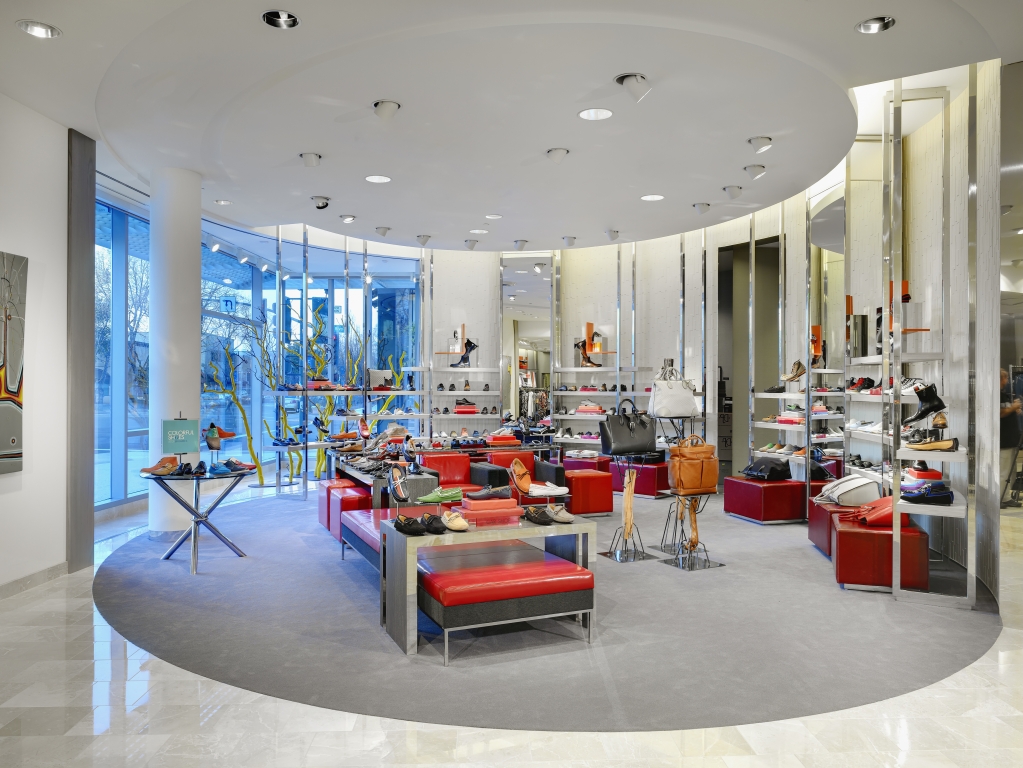

 Photo Gallery1 week ago
Photo Gallery1 week ago
 Headlines1 week ago
Headlines1 week ago
 Headlines2 days ago
Headlines2 days ago
 Headlines1 week ago
Headlines1 week ago
 Headlines1 week ago
Headlines1 week ago
 Designer Dozen2 weeks ago
Designer Dozen2 weeks ago
 Designer Dozen6 days ago
Designer Dozen6 days ago
 Headlines1 week ago
Headlines1 week ago
